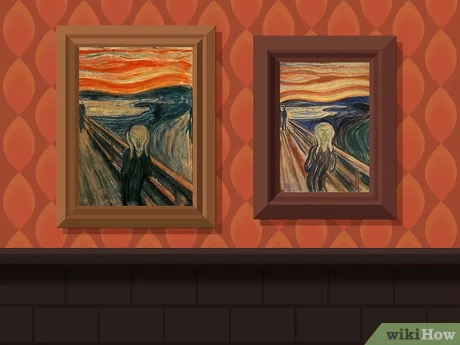In the realm of fine art insurance, where safeguarding valuable artworks is paramount, the process of valuation stands as a critical component. This valuation, however, is not without its complexities and challenges, casting a spotlight on the nuanced aspects of appraisal and assessment. To navigate this intricate landscape, it is essential to delve into the various methods employed for determining the value of fine art and the hurdles encountered in this evaluative journey.
Appraisal Methods
Within the domain of valuation methodologies, various approaches are employed to ascertain the worth of fine art. These methods serve as the foundation for determining insurance coverage and ensuring the safeguarding of valuable artworks.
Market-based approaches hinge on the comparison of an artwork’s value with similar sales and auction results. This method involves an intricate analysis of the art market dynamics, incorporating the expertise and discernment of seasoned art connoisseurs.
Cost-based methods, alternatively, center around the assessment of replacement and reproduction costs. Here, the challenge lies in quantifying the value of an artwork in terms of its replaceability and replicability, grappling with the intrinsic uniqueness often associated with fine art pieces.
Challenges in Fine Art Valuation for Insurance
The valuation of fine art for insurance purposes is not devoid of intricacies and challenges, presenting a complex landscape that necessitates a nuanced understanding. One of the primary challenges lies in the inherent subjectivity intertwined with expertise in the field. Art valuation heavily relies on the discernment and knowledge of experts, leading to a lack of standardized criteria and potential disparities in appraisals.
The dynamic nature of the art market introduces a layer of uncertainty. Fluctuating prices and the market’s sensitivity to economic conditions pose challenges in accurately assessing the value of artworks. The market’s volatility demands a constant vigilance and adaptability in valuation strategies to reflect the ever-changing landscape.
Rarity and uniqueness further compound the challenges. The limited availability of comparable sales data, coupled with the distinctive characteristics of each artwork, makes it challenging to establish a universally accepted valuation framework. This uniqueness introduces a layer of complexity that standard valuation models may struggle to encapsulate adequately.
Documentation and Provenance
The domain of fine art valuation for insurance is intricately linked with the meticulous documentation and provenance of artworks. Proper documentation serves as a cornerstone, encompassing a comprehensive record of an artwork’s historical journey and background. Within this context, provenance records play a pivotal role, offering insights into the ownership history, exhibition engagements, and any notable events shaping an artwork’s trajectory over time.
The significance of these records cannot be overstated. They contribute not only to the authentication of an artwork but also to its contextual understanding. Exhibition histories, for instance, shed light on the public presentation of the artwork, adding layers of historical and cultural context to its narrative.
Legal and Regulatory Considerations
In the complex landscape of fine art valuation for insurance, legal and regulatory considerations play a pivotal role in shaping the framework within which these valuations occur. Compliance with industry standards, insurance regulations, and established appraisal guidelines is essential for ensuring the integrity and legitimacy of the valuation process.
The adherence to industry standards encompasses a range of protocols and best practices that professionals in the field must follow. These standards are designed to maintain consistency, transparency, and ethical conduct within the fine art valuation sector. Failure to comply with these standards may not only compromise the accuracy of valuations but also expose stakeholders to legal and reputational risks.
Navigating insurance regulations is another critical facet. Compliance with regulations specific to the insurance industry is imperative to ensure that valuations align with the overarching legal framework. Deviations from regulatory requirements may result in legal complications, affecting the validity of insurance policies and potentially leading to disputes between insured parties and insurers.
Technological Innovations in Valuation
In the dynamic landscape of fine art valuation for insurance, technological innovations are progressively reshaping traditional approaches. These advancements are instrumental in addressing challenges inherent in the valuation process and introducing new dimensions to the assessment of artwork values.
Blockchain technology, with its decentralized and transparent nature, has emerged as a promising tool for enhancing provenance verification. By creating an immutable record of an artwork’s ownership history, blockchain mitigates concerns related to forgery and provides a secure and trustworthy foundation for valuations.
Artificial Intelligence (AI) and machine learning are increasingly integrated into valuation models, offering data-driven insights and analytical capabilities. These technologies can analyze vast datasets, track market trends, and identify patterns, contributing to a more sophisticated and accurate understanding of an artwork’s value. Machine learning algorithms can adapt to evolving market conditions, enhancing the resilience of valuation models in the face of market volatility.
Risk Mitigation Strategies
In the intricate realm of fine art insurance valuation, the management of risks is a paramount consideration. Various strategies are employed to mitigate the uncertainties associated with the valuation process, safeguarding both insurers and insured parties.
Diversification of valuation methods stands out as a fundamental approach. Acknowledging the inherent challenges and subjectivity within any singular method, employing a diverse set of valuation approaches contributes to a more comprehensive understanding of an artwork’s value. This methodological diversity helps in capturing the intricacies that may be overlooked by a singular approach.
Regular valuation updates constitute another crucial risk mitigation strategy. Given the dynamic nature of the art market, where prices can fluctuate based on economic conditions and cultural trends, routine updates ensure that the assessed value remains reflective of current market realities. This proactive approach helps insurers adapt to changing circumstances and mitigate the risk of undervaluation or overvaluation.
Conclusion
In conclusion, the valuation challenges encountered in the realm of fine art insurance underscore the intricate nature of appraising and assessing cultural treasures. The process, marked by subjectivity, market volatility, and the unique characteristics of each artwork, demands a nuanced approach that combines traditional expertise with innovative solutions.
